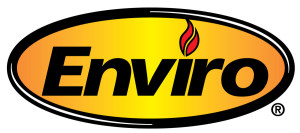Risks of “Vent-free” Fireplaces not Worth the Benefits
Ventless fireplaces are simply too unsafe for us to work on and still stand by our commitment to your safety. While it’s true there are no documented deaths from ventless fireplaces, it’s also true that many people report headaches and other health problems that seem to be caused by them.
But if that’s all true, why are ventless fireplaces even allowed to be sold?
A Quick Guide to Vent-Free Fireplaces
Just like the name implies, ventless fireplaces have no vents. A typical fireplace has either a flue or a chimney. Why? Because fire is a combustion reaction, and it produces gases and other waste products that have to go somewhere. But with a chimney you also lose some of the desirable heat.
The theory behind ventless fireplaces is that if we can burn the fire clean enough and minimize the gases produced, we can reap the benefits of having more heat come in the home.
Also, they are less expensive and easier to install, and they can look nice as part of a room in places you don’t normally see a fireplace, such as the side of a wall.
Ventless fireplaces burn natural gas or propane, and they get their oxygen fuel from the air inside your house. They can be powered by electricity, or alcohol gels.
They typically come with carbon monoxide detectors that will automatically shut off the fire if the CO levels get too high.
And therein lies the main reason we don’t do ventless at B&C Comfort.
Are You Comfortable Trusting Your Life to a CO Detector?
We aren’t. With a ventless fireplace, you are knowingly producing deadly (and odorless) carbon monoxide and letting it into your home, as well as carbon dioxide, which is harmful too if you get too much of it in a closed room. At the same time, you’re using up the oxygen to burn the fire.
So, you’re reducing the oxygen you need to breathe, and you’re increasing the gases that can harm or even kill you.
Is that a comfortable way to live? Not to us.
Gas has to go somewhere. It doesn’t matter how clean the fire burns. It will produce carbon dioxide and water vapor – guaranteed. And if the combustion process becomes more inefficient, such as from a buildup of soot on the logs, then more deadly CO will also be produced. That’s basic science.
So if your CO detector fails, you are putting yourself at serious risk.
Some states and countries have even outlawed them because of these risks. And even businesses who continue to install ventless fireplaces agree that people with asthma or other respiratory illnesses shouldn’t use them.
If there were no risk at all, then their proponents wouldn’t agree even with these exceptions.
4 More Reasons to Remove a Ventless Fireplace If You Have One
- They smell bad. Why? Because other waste products from combustion also get sent into your home.
- They still require maintenance and cleaning. If soot builds up in your regular gas fireplace, you just lose some efficiency. That’s not good, and it’s why fireplace cleaning is one of our main services. But if soot builds up in a ventless fireplace, you’ll produce more carbon monoxide, and it will come into your home. That’s life-threatening. Cleaning now becomes about saving your life, rather than just keeping the fireplace working right.
- Log placement is equally vital, for the same reasons as maintenance and cleaning. Again, this matters in regular gas fireplaces too. Click here for more information about gas fireplace log placement.
- Ventless fireplaces also produce a lot of water vapor – another byproduct of combustion. Again, you can’t avoid this. It will happen, and it means your house will be more humid. Depending on where you live, some people want more moisture. But here in the northwest, more moisture usually means a greater risk of mold.
While ventless fireplaces certainly have some benefits – less cost, attractive appearance, easier to install, more heat – the risks they carry are simply too great.
We aren’t willing to risk the health and safety of our customers. For that reason, and all the others you’ve just read, we don’t install or service ventless fireplaces. And if you do get any health problems from a ventless fireplace, your cost savings have just gone up in smoke.
If you have a ventless fireplace and want it removed – contact us today and we’ll schedule an appointment.
For more about our award-winning fireplace repair and maintenance service, or to make an appointment:
Visit our fireplace services page











